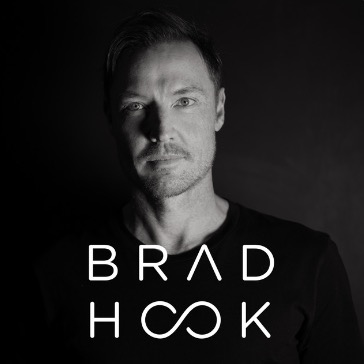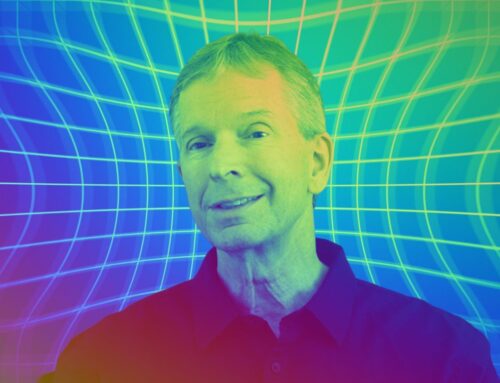Updated on 01 July 2024
If you’re here, you probably watched the Joe Rogan Experience podcast episodes #2152 and/or #2171, which featured Terrence Howard. In the second appearance, Joe brings in Eric Weinstein to discuss some of Terrence’s ideas from an academic perspective.
Both episodes are, at times, hard to follow and, for the less mathematically inclined, perhaps even bamboozling. But they certainly are interesting.
While there has been some criticism and backlash against Howard’s ideas, I thought it would be worth researching and simplifying them below. I’ve also included some of Terrence Howard’s background and influences.
👉 Please join my newsletter for more summaries like this, or follow my podcasts. 👈
Terrence Howard, an Oscar-nominated actor, is also known for his intriguing and complex theories about reality. His ideas challenge conventional scientific thought, exploring the nature of the universe, matter, and energy. Here is a summary of key concepts shared on Howard’s first Joe Rogan appearance.
Key Concepts
Memories from the Womb
Howard started his interview by claiming he remembers everything from the time he was in his mother’s womb. For many of us, this signals the best kind of JRE episode. Howard described detailed memories, such as seeing his hand in utero and being circumcised, suggesting an extraordinarily early level of consciousness. This claim challenges conventional understanding of memory formation, which typically develops post-birth.
Background: While the scientific community largely agrees that memories cannot form until after birth due to the development of the brain’s hippocampus, there are anecdotal accounts and studies on prenatal learning that suggest some level of sensory memory might be possible. Howard’s claim, though extraordinary, encourages a deeper look into the mysteries of human consciousness and memory formation.
The Universal Wave Function
One of Howard’s core beliefs revolves around the idea that everything in the universe can be explained through waves. Imagine dropping a pebble into a pond and watching the ripples spread out. Howard proposes that the fundamental building blocks of reality are not particles (like the pebble), but waves (like the ripples). These waves interact in complex ways when they collide — think froth or air bubbles — to form the universe.
Background: This perspective aligns with some interpretations of quantum physics, which suggest that particles can also behave like waves. The wave-particle duality in quantum mechanics reveals that particles such as electrons and photons can behave both as particles and waves. Howard’s fascination with this concept likely stems from the work of physicists like Niels Bohr and Erwin Schrödinger, who were pioneers in quantum theory.
Gravity is Fake
Howard made the bold claim that gravity is fake, suggesting an alternative force at play. He believes that he could “rebuild Saturn without gravity,” describing an inward-outward force that shapes planets without relying on gravity, dark matter, or dark energy. He showed how this works using an on-screen simulation.
Background: This idea challenges Newtonian physics and Einstein’s general relativity, which have long described gravity as a fundamental force. Howard’s view seeks to rethink how we understand planetary formation and the forces that govern celestial bodies. While mainstream science does not support this view, exploring such unconventional ideas can inspire new ways of thinking about the universe.
Straight Lines are an Illusion
Howard claims that straight lines are an illusion and that, when viewed from the correct perspective, they are not straight. This idea suggests that our perception of geometry is limited and that true forms differ from what we observe.
Background: This concept might be inspired by non-Euclidean geometry, which explores curved spaces and shapes that defy traditional straight-line definitions. Additionally, at the quantum level, particles exhibit wave-like behavior, suggesting that straight lines might be an illusion when you zoom in far enough. Howard’s assertion encourages rethinking basic geometric principles. For instance, in the theory of general relativity, the presence of mass can curve spacetime, making straight lines appear curved when viewed in the context of the universe.
The “Flower of Life” and Math
Howard has expressed a deep fascination with a geometric figure known as the “Flower of Life.” This symbol, which dates back to ancient civilizations, is believed to represent the fundamental patterns of the universe. Think of it as a beautiful, intricate snowflake-like pattern that repeats itself. Howard suggests that traditional mathematics, particularly the value of one, is flawed. Instead, he believes that understanding the universe requires a new mathematical framework based on this sacred geometry.
Background: The Flower of Life has roots in sacred geometry, which has been studied by various ancient cultures, including the Egyptians and Greeks. This symbol is often linked to the fundamental shapes and patterns found in nature. Howard’s ideas are influenced by the belief that these geometric patterns can reveal deeper truths about the universe. Sacred geometry involves the study of shapes and symbols that have been used in art, architecture, and nature throughout history.
Multidimensional Model of the Flower of Life
Howard takes the Flower of Life concept further by creating a multidimensional model. Imagine taking a flat, intricate pattern and folding it into a complex, three-dimensional structure, like origami. This model illustrates the interconnectedness of all things in the universe. According to Howard, this multidimensional Flower of Life is key to understanding the fabric of reality and the true nature of existence.
Background: Howard’s expansion of the Flower of Life into a three-dimensional model suggests a deeper level of complexity and interconnectedness. This idea may be inspired by modern physics’ exploration of higher dimensions, as proposed in string theory and M-theory, where the universe is seen as having multiple dimensions beyond the three we experience.
The Lynchpin Concept
Howard’s Lynchpin concept explores the fundamental role of the square root of two in understanding the universe’s geometry. Imagine a key that unlocks a complex puzzle. The Lynchpin, as Howard describes it, is this key. It’s crucial to his theories about the interconnectedness and fundamental nature of the universe. He believes that by examining this constant, we can uncover deeper truths about reality.
Background: The square root of two is a well-known mathematical constant with a rich history in geometry and number theory. Howard’s interpretation suggests that this constant holds a pivotal role in the structure of the universe, which may be inspired by its use in ancient architectural and geometric designs.
Challenging Multiplication: Howard’s Hypothesis
Both on the JRE and in his Oxford Union address, Howard challenges a fundamental principle of mathematics: multiplication. Specifically, he questions the accepted result of 1 x 1 = 1. Howard argues that this equation is incorrect, suggesting instead that the product of one times one should be two. Think of it as combining two unique ingredients to create something new, rather than just one thing. Howard’s hypothesis encourages rethinking basic arithmetic principles and their implications on understanding reality.
Background: Howard’s challenge to multiplication is rooted in his exploration of geometric and wave patterns. This idea reflects his broader quest to rethink and redefine basic mathematical principles to better align with his views on the interconnectedness of reality.
👉 Please join my newsletter for more summaries like this, or follow my podcasts. 👈
Insights from Terrence Howard and Eric Weinstein
Eric Weinstein, with a PhD in mathematical physics, has held positions at top institutions like MIT, Harvard, and Oxford. He’s known for his podcast “The Portal” and his deep dives into complex scientific topics.
The conversation between Weinstein and Howard spanned mathematical theories, scientific principles, and personal anecdotes, making for an engaging and thought-provoking discussion.
Challenging the Status Quo
Howard’s main idea is that conventional mathematics might have flaws. He uses the example of “1 times 1 equals 2” to symbolize challenging the status quo. This idea, while provocative, has faced significant criticism from the academic community. However, Howard emphasizes that his goal is to stimulate critical thinking and exploration of new concepts.
The Role of Criticism
Eric Weinstein, who values open-minded discussion, pointed out that criticism often becomes personal rather than constructive. He believes in “steel manning” arguments, which means presenting someone’s ideas in the strongest possible way before critiquing them. This approach fosters better understanding and fair assessment of new ideas.
Scientific and Mathematical Debates
The discussion covered various complex topics. Weinstein explained the concept of potential energy, using the example of a weight on a spring to illustrate that not all energy is expressed in motion. This countered Howard’s initial claim that all energy involves motion.
Howard’s ideas also touched on prime numbers. He argued that the number two should not be considered a prime number because it doesn’t behave like other primes when subtracted from another prime. This led to a deeper discussion on the nature of numbers and their properties.
Flower of Life
As per the first episode, one of Howard’s most intriguing points was his interpretation of the Flower of Life. He sees this ancient symbol as a two-dimensional representation of a more complex, three-dimensional structure. Howard suggests that this pattern, found in various cultures worldwide, might hold hidden mathematical secrets.
The Nature of Academia
Weinstein and Howard also discussed the competitive nature of academia. Weinstein noted that the academic world often doesn’t welcome new ideas and can be viciously competitive. This environment can stifle innovation and discourage unconventional thinking.
Points of Difference
The main points of difference between Weinstein and Howard revolved around their approaches to mathematical concepts and scientific critique:
1. Mathematical Foundations: Howard’s idea that “1 times 1 should equal 2” is a metaphorical challenge to traditional mathematics, while Weinstein firmly adheres to established mathematical principles, emphasizing the importance of logical consistency.
2. Potential Energy: Weinstein explained that potential energy can exist without motion, using the example of a weight on a spring. Howard seemed to believe that all energy involves some form of motion, which Weinstein countered with established physics principles.
3. Prime Numbers: Howard’s assertion that the number two should not be considered a prime number due to its unique properties was met with skepticism by Weinstein, who pointed out that mathematicians often recognize two as a special case but still consider it a prime.
Convincing Arguments
Eric Weinstein appeared more convincing in the discussion due to his ability to provide clear, scientifically grounded explanations for complex concepts. His emphasis on the importance of logical consistency and his use of examples from established physics helped reinforce his points. Howard, while passionate and thought-provoking, often presented ideas that seemed more metaphorical and less grounded in conventional scientific methodology.
Looking Forward
Despite the criticisms, both Howard and Weinstein see value in exploring new ideas and challenging established norms. Howard expressed his hope for future collaborations and further discussions to refine and present his theories more effectively.
Here is the full conversation between Howard and Weinstein.

Connect with me on Instagram, LinkedIn and YouTube or check out the Brad Hook Podcast on Apple or Spotify.
Terrence Howard’s Early Life and Influences
Influences and Inspirations
Terrence Howard’s ideas are influenced by a diverse array of scientists, philosophers, and theories:
- Nikola Tesla: Revolutionized our understanding of energy and electromagnetism. Tesla’s innovative ideas about wireless transmission of energy and his vision of a unified energy field resonate with Howard’s theories about waves and interconnectedness.
- Albert Einstein: Challenged our perceptions of time and space with his theory of relativity. Einstein’s work on the interrelation of space and time and his famous equation, E=mc^2, inspire Howard’s exploration of reality’s deeper dimensions.
- Pythagoras: Linked mathematics with the cosmos, influencing Howard’s views on sacred geometry. Pythagoras’ belief in the harmony of numbers and their relationship to the physical world mirrors Howard’s fascination with the Flower of Life.
- Ancient Symbols and Sacred Geometry: Reflect Howard’s belief in a deeper, interconnected reality. Symbols like the Flower of Life and the concepts of sacred geometry provide a framework for Howard to explore the universe’s fundamental patterns.
Why Reality?
Howard’s interest in the nature of reality stems from a personal quest for understanding. Throughout his life, he has sought to uncover the fundamental truths that govern existence. This curiosity drives his exploration of the universe, pushing him to question established norms and seek out new paradigms.
Howard’s journey into exploring reality began with his fascination with science and mathematics from a young age. His inquisitive nature led him to question the established scientific doctrines and seek out alternative explanations that could better satisfy his quest for knowledge. This lifelong pursuit of understanding is what fuels his innovative spirit and his desire to challenge conventional wisdom.
Practical Applications
Patents and Innovations
Howard is not just theoretical; he puts his concepts into practice. He holds an impressive 97 patents, many of which he believes will change the world. These patents span various fields, including Virtual Reality and Diamond Jewelry, showcasing his commitment to applying his ideas in practical ways. From innovative designs to potentially groundbreaking technologies, Howard’s inventions reflect his desire to make a significant impact on the world.
Some of his notable patents include advanced designs in metallurgy, chemical engineering, and even innovations in flight technology. He demonstrated a 3D printed render of a device that looks potentially safer and more efficient than conventional flying machines.
Howard’s ability to translate his theoretical ideas into practical inventions demonstrates his multifaceted approach to understanding and shaping reality.
Innovating and Questioning
While some of Howard’s ideas might seem unconventional, they serve an important purpose: they encourage us to question the status quo and think creatively about the nature of reality. By challenging dogma and exploring alternative theories, we can gain new insights and foster innovation in science and beyond.
Howard’s theories inspire us to look at the world differently, to question what we take for granted, and to seek deeper understanding. Whether through his exploration of waves, his fascination with sacred geometry, or his practical inventions, Howard embodies the spirit of curiosity and innovation that drives progress.
He openly requests debates with scientists like Neil deGrasse Tyson but, so far, none have accepted. Is this because they find interdisclipinary approaches too complex or because they think it would be a waste of time?
Conclusion
Terrence Howard’s theories, though complex and sometimes controversial, offer a fascinating lens through which to view the universe. By simplifying these ideas, we can appreciate the value they bring in encouraging us to rethink our understanding of reality. Whether or not we agree with all of his conclusions, Howard’s willingness to challenge conventional thought and explore new ideas is a testament to the power of curiosity and innovation, inspiring a deeper appreciation of the interconnectedness of all things.
Written by : Brad Hook
Brad Hook is a writer, podcaster, speaker and entrepreneur. Connect with Brad. He helps individuals and teams achieve sustainable high performance through inspiring workshops and a powerful suite of digital tools.
Stay connected with Brad
BE NOTIFIED ABOUT EVENTS and receive the latest tools and tips first
We will never share your email with others.








